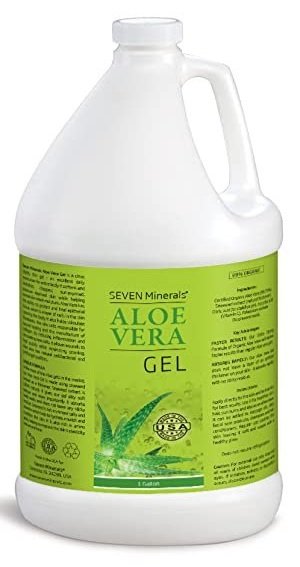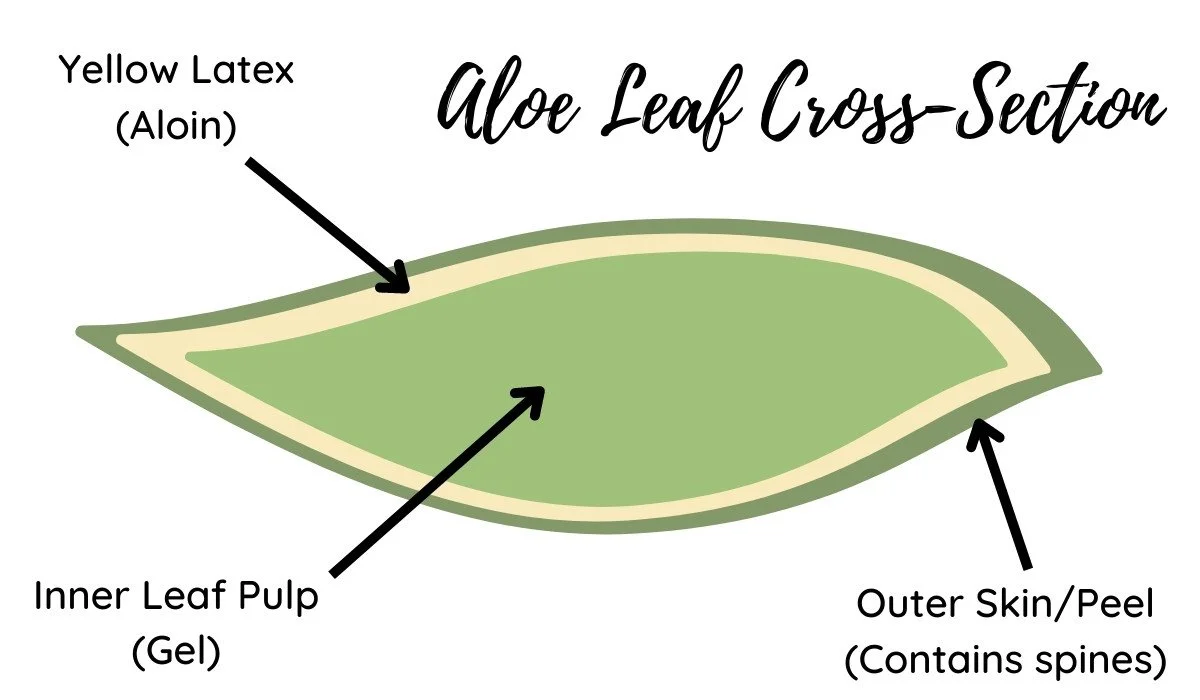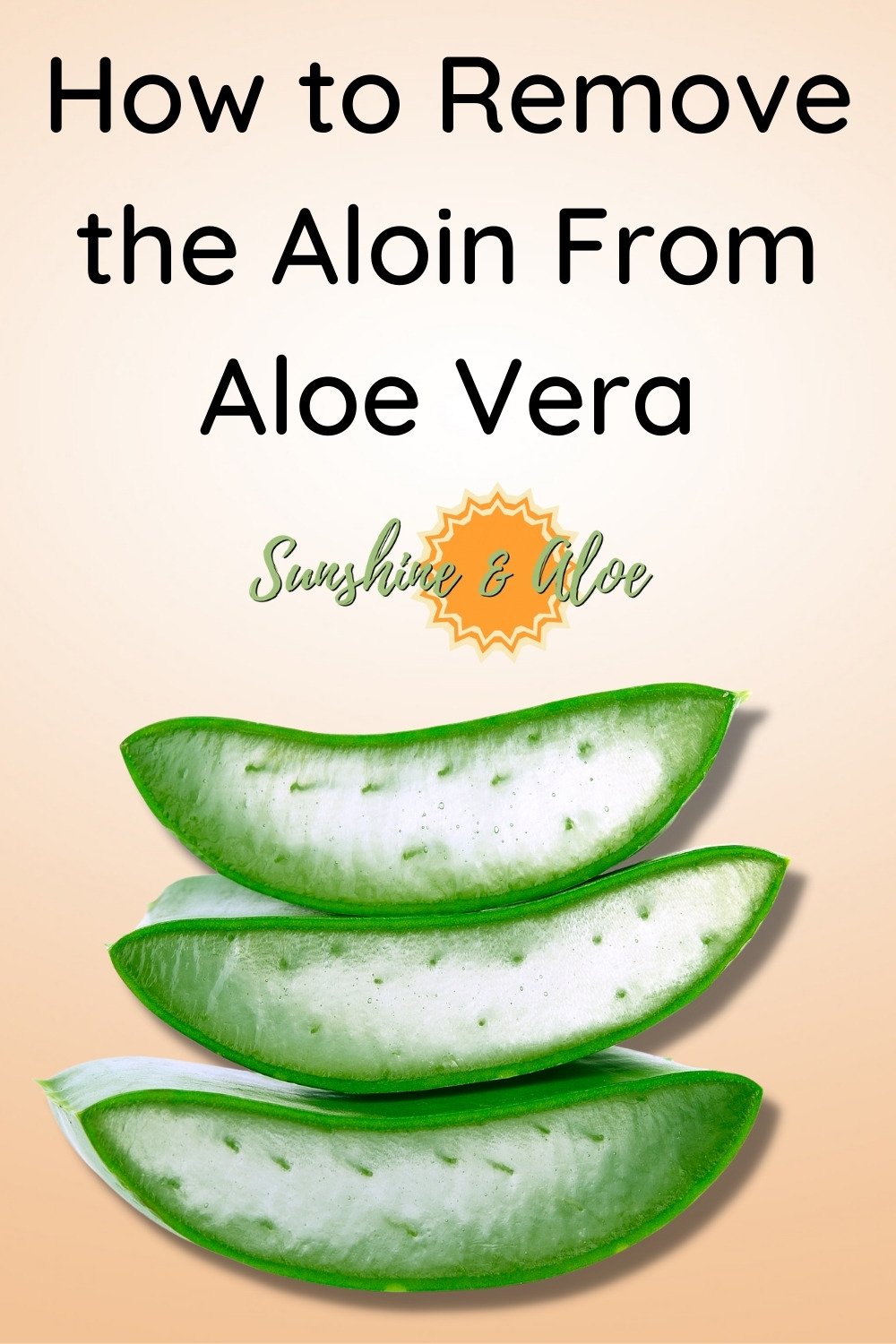Explore the health benefits of aloe vera.
How to Thicken Your Homemade Aloe Vera Gel
Thicken your homemade aloe vera gel with natural thickeners like xanthan gum and agar.
Making your own homemade aloe vera gel is a sure way to know you are putting a natural product on your skin. But if you’ve made DIY aloe vera gel, you know how annoyingly runny it is!
Fresh aloe vera isn’t like the thick and goopy gel you squeeze out of a bottle, because commercial aloe vera gels are loaded with thickening agents. Sure, the inner leaf pulp of an aloe plant is a gel-like solid. But when you toss that pulp into your blender, it quickly becomes a frothy liquid.
While there is nothing wrong with liquid aloe vera, it can be more difficult to apply than a gel. And it doesn’t quite have the same soothing and cooling effect. So, if you’re tired of dealing with runny aloe vera, there are a few natural thickeners you can add to your homemade aloe vera gel.
Xanthan Gum
There’s a type of bacteria that creates a gooey substance when it ferments sugar. That substance is called…xanthan gum. Don’t ask me why. As strange as it may sound, xanthan gum powder is a common food additive – thickening everything from soups to ice cream.
Thickening your aloe vera gel with xanthan gum is very simple, because xanthan gum powder acts almost instantly. You don’t even have to heat the liquid. Just blend your aloe vera, add xanthan gum, and blend again until thoroughly mixed.
Start small, with 1/4 tsp of xanthan gum per two cups of aloe vera. Then you can add more xanthan gum as needed if your gel still isn’t thick enough. Generally, for thick mixtures, a concentration of 0.3%-1% xanthan gum works best.
Powdered Gelatin
If you want an extra-thick aloe vera gel, try adding powdered gelatin. Gelatin is an animal byproduct that acts as a thickener, and it produces more of a jelly-like texture than xanthan gum.
Unlike xanthan gum, gelatin takes a two-step process to set that involves mixing it with cold water then hot. First, mix 1 tablespoon of gelatin with 1/4 cup of cold water and let it sit for about 5 minutes…until the gelatin thickens to a jelly-like consistency. Then you will need to heat it, either by microwaving the gelatin or adding a cup of hot water. Once the gelatin mixture is a liquid again, you can add your blended aloe vera juice.
If you added a cup of hot water, only add a cup of aloe vera. Otherwise, if you microwaved the mixture to heat it, you should be able to add 2 cups of aloe vera.
Whisk everything together until combined, then store it in the fridge for 30 minutes or until the mixture has thickened up significantly. Because gelatin takes a while to set, it’s hard to tell if you are using the right amount of gelatin powder for your homemade aloe vera gel. After making it for the first time, you may need to adjust the ratios.
Agar
Agar is a vegetarian form of gelatin that actually comes from seaweed!
Unlike animal-derived gelatin powder, which has to set in cold water for five minutes, agar powder has to be boiled in water for five minutes. Then you can blend it with your aloe vera and leave it to set at room temperature. Agar takes even longer to set than gelatin does, so it may take an hour for your aloe vera gel to thicken.
Which Thickener Should You Use?
Xanthan gum is the easiest thickener to use (it’s hard to mess it up!), so it might be the best choice for your homemade aloe vera.
However, xanthan gum doesn’t create a gel-like texture. So if you are trying to create an actual gel, then gelatin or agar may be better options for you.
Most natural aloe vera brands use either xanthan gum or agar; I’ve yet to see one that uses powdered gelatin. Seven Minerals, my favorite aloe vera brand, uses agar in their products. NaturSense, another natural brand I like, uses xanthan gum. So it’s really up to you as to which one you want to try for your homemade aloe recipe.
Where to Buy Aloe Vera Gel in Bulk
Should you buy aloe vera gel in bulk? Read on to find out, and get my list of my top 3 brands that sell aloe vera by the gallon.
Do you use aloe vera gel to keep your skin soft and moisturized? If you use aloe on a regular basis, you might want to consider buying in bulk!
The economy isn’t looking so hot right now. Skincare products can seem extra, unnecessary, and painfully expensive.
Fortunately, buying larger quantities of aloe vera drastically cuts down on the price per ounce. You can cut back on expenses and still keep plenty of aloe vera gel on hand when you buy aloe vera in bulk.
Buying Aloe Vera Gel by the Gallon
If you are planning to buy aloe vera gel in bulk, I recommend starting with a gallon size. There are a few brands that sell a gallon of aloe vera gel, and I’ve listed my top three choices below.
7 Minerals is my favorite brand for aloe products, even though it’s a little more on the expensive end. It’s a family-owned business that uses real aloe and very few additional ingredients in their products. The 7 Minerals aloe vera gel is about as close as you can get to fresh aloe vera without extracting it from the leaf yourself.
Currently, a gallon of 7 Minerals aloe vera gel is priced at $89.96 on Amazon. It sounds like a lot, but it’s really a price of $0.70 per ounce. That’s a steal when you consider their 12-ounce bottle is priced at $19.95 ($1.66 per ounce)!
I’m sure the prices will change over time, but right now you are getting more than 50% off the price per ounce if you buy their aloe vera gel in bulk.
Lily of the Desert
Like 7 Minerals, Lily of the Desert keeps its aloe vera gel ingredients to a minimum. Just be aware that it uses carrageenan as a thickening agent. For most people this is perfectly fine, but some people have an allergy to carrageenan.
A gallon of Lily of the Desert aloe vera gel is currently priced at $23.98 on Amazon. That’s pretty cheap for aloe vera gel! Lily of the Desert aloe vera is definitely the most affordable pick of this list, so if you’re on a tight budget, it’s the best choice for you.
Image from Amazon.com
Honeyskin
The Honeyskin aloe vera gel is diluted with glycerin, which has similar soothing effects when applied topically, but doesn’t provide the same health benefits as aloe vera. Because it’s not as concentrated, Honeyskin’s aloe vera gel is at the bottom of my list.
However, this aloe vera gel contains flower extracts, apple extracts, and other plant-based ingredients. I’m not an expert on how fruit & flower extracts benefit skin, but maybe their recipe includes a secret ingredient that can work magic for your skin!
Honeyskin also offers a median price option for buying aloe vera gel in bulk, falling in between 7 Minerals and Lily of the Desert. Their gallon of aloe vera is currently priced at $64.99 on Amazon, which is just $0.51 per ounce.
What is the Shelf Life for Aloe Vera Gel?
As you may have guessed, fresh aloe vera expires very fast. Once cut, a leaf will only last a day or two at room temperature, and a little longer if it is refrigerated. For this reason, it’s hard to keep up with making your own aloe vera gel at home.
Commercial aloe vera gel, on the other hand, has preservatives added to give it a long shelf life. You can expect most aloe vera gels to last a good 2-3 years. There might be a few exceptions to this, but I’ve never had aloe vera gel go bad!
With a two-year shelf life, it is pretty safe to buy aloe vera gel in bulk. As long as you use aloe vera on a regular basis, you won’t have to worry about your aloe going bad.
Is the Aloin in Aloe Vera Toxic?
Learn about the function of aloin in aloe vera, whether it is toxic or safe, and how you can remove it from aloe vera gel.
Have you ever heard that aloe vera is toxic?
Crazy, right? Aloe vera is supposed to be a highly beneficial medicinal plant. So how could it be toxic?
Well, aloe vera gel is very safe. But the aloe vera leaf doesn’t just contain gel. It also contains something called aloin, a compound that can be toxic depending on how much you consume.
What is Aloin?
Aloin is a type of anthraquinone. Good luck pronouncing that word!
What exactly is an anthraquinone? Anthraquinones are potent compounds that actually have many medicinal benefits. Like other compounds in aloe vera gel, anthraquinones also have antiseptic and antioxidant properties. And they function as laxatives, so they can be a useful treatment for constipation.
That all sounds good, right? Here’s the thing: taken in small amounts, anthraquinones aren’t toxic. In fact, they can provide many health benefits.
The problem is that aloin, like many anthraquinones, is very strong. While taking small amounts of aloin may relieve constipation, you don’t want to take too much! Furthermore, people who regularly use anthraquinones as laxatives can develop an unwanted dependency on them.
Lastly, anthraquinones are used in chemotherapy drugs. They are effective in treating cancer —but that should tell you something about their potency!
Parts of an Aloe Vera Leaf
The aloe leaf is separated into three main parts.
The skin or peel. The skin is very tough and contains spines along the edges.
The outer leaf pulp. Also known as the aloin, the outer leaf pulp is a yellowish latex.
The inner leaf pulp. This part of the aloe vera leaf is the gel portion and forms the majority of the leaf.
As you can see from this diagram, the aloin coats the gel, separating it from the skin. As a result, many aloe vera products have traces of aloin of them, leading some people to question whether they are really safe or not.
Are Aloe Vera Products Safe?
Despite the aloin in aloe vera being potentially dangerous, you shouldn’t shy away from aloe vera entirely. Aloe vera is an amazing plant, with anti-inflammatory, antioxidant, and antibacterial characteristics.
Most aloe vera drinks contain small amounts of aloin, but not enough to be toxic. You can expect concentrated aloe drinks to have a slight laxative effect, without any other side effects. Diluted aloe vera drinks may not have any side effects at all.
Generally, aloe drinks are safe, but if you experience any strange side effects then you should stop using that product and find an alternative. Because aloin is harmless when applied topically, topical aloe vera products are safe unless you have an allergic reaction (which is very rare).
How to Remove the Aloin From Your Aloe Vera
If you are worried about the safety of commercial aloe vera drinks, you can make your own aloe drinks at home and remove the aloin yourself! Simply take a fresh aloe leaf, cut it into several chunks (before removing the peel) and soak the chunks in a bowl of water. You may notice the yellow latex seeping into the water.
After a few minutes, you can rinse off the chunks. That should remove most of the aloin, but if you want to be sure, you can repeat the process. Just soak and rinse the aloe vera pieces again, then you can remove the peel and extract the gel like usual.
Once you have prepared the fresh aloe vera gel, there are several different ways you can add it to your drinks. You can mix it with a sweetener and water to make aloe water. Or you can blend the aloe into your smoothies. If you are a tea drinker, you can make aloe vera tea or use it as a refreshing topping for a fruity bubble tea.








